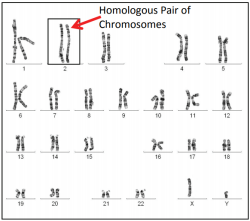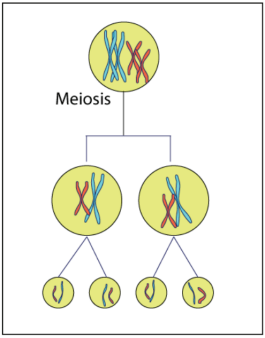3. Cystic Fibrosis and Huntington’s disease are examples of inherited conditions caused by gene mutations. Cystic Fibrosis has an autosomal recessive inheritance pattern while Huntington’s Disease has an autosomal dominant inheritance pattern. Describe the difference between these inheritance patterns and explain how these differences impact on the likelihood of inheritance of the disease by the child of a carrier parent.
4. Define the term aneuploidy and explain the difference between monosomy and trisomy.
5. The diagram on the right shows the process of meiosis. Aneuploidy can be caused by non‐disjunction during meiosis, leading to the formation of gametes that are (n+1) or (n‐1). Explain how this occurs.
6. What is the difference between pre‐natal screening and pre‐natal diagnosis?
7. Pre‐natal diagnosis of chromosomal abnormalities uses karyotyping. In pre‐implantation genetic diagnosis karyotype testing is not an option because only one or two cells are collected and the chance of the chromosomes being visible is very slight. At what stage in the cell cycle are the chromosomes visible?






